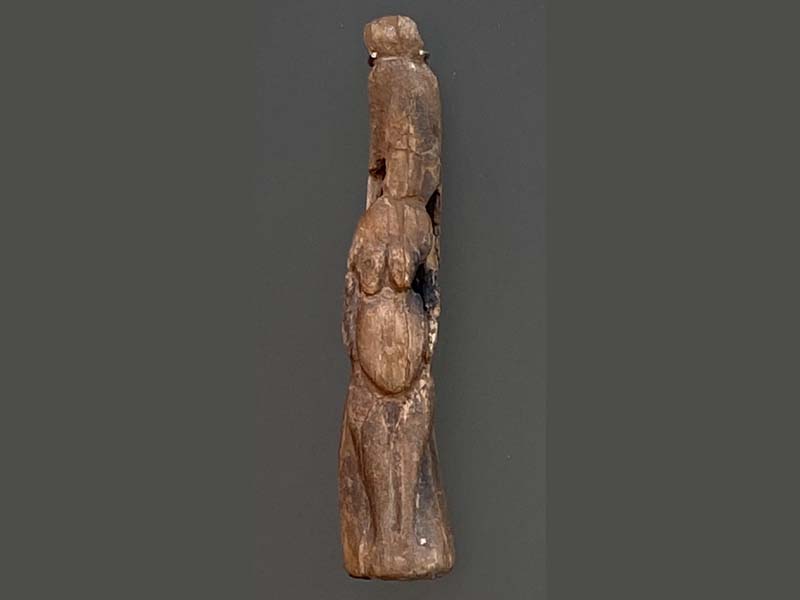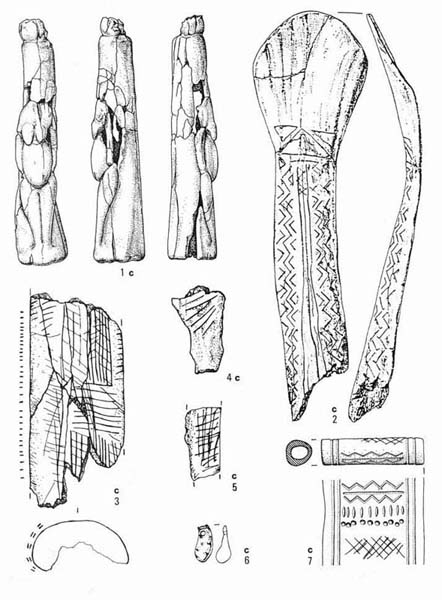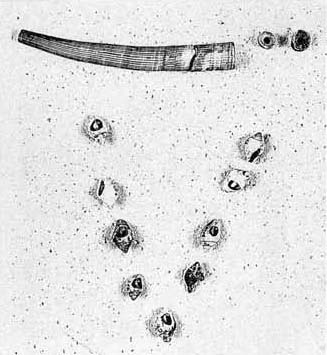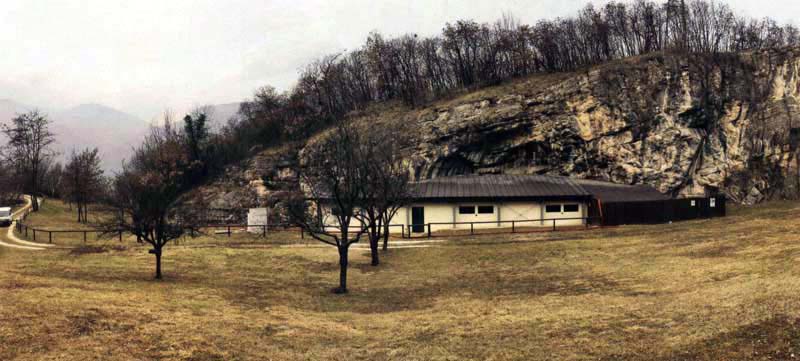Stylistically different from Neolithic figurine from Gaban, this comes from the Mesolithic layer: it is a female statuette carved in bas-relief on a red deer horn support, with very realistic anatomical details, depicted in an upright position with arms extended along the wide sides; she has a prominent belly, almost covering the pubic triangle, and two sagging breasts, the legs are divided by a longitudinal furrow and the feet are just sketchy; her face is without features, with a non-finished technique on the stylistic model of the "venuses" of the Upper Paleolithic of much of Europe. It was found in 1974 during the excavations directed by Bernardo Bagolini at the base of the late Castelnovian stratum (Mesolithic cultural facies which takes its name from the French center of Chateauneuf-les-Martigues, near Marseilles).
Other finds belonging to the same Mesolithic layer are:
- a fragment of a deer antler spatula, decorated with engraved geometric motifs, probably used as a leather degreaser;
- marine shells, of the Columbelle type with holes, found in 29 specimens, probably from the Adriatic, together with Cyclope neritea, a specimen of Dentalium, atrophic deer teeth, pearls made with large fish vertebrae, all elements used as an ornament , but it is not known exactly how they were worn, whether around the neck or on the belt, worn by men, women or children, whether they were part of personal parures or whether they were objects placed as offerings for propitiatory purposes;
22 pieces of red ocher with a diameter of 1 cm.; the use of red ocher was particularly widespread in the Upper Paleolithic and the discovery made in the area testifies to its widespread use also in the Mesolithic.




Historical notes
Shelter Gaban is located in Piazzina di Martignano, in the northeastern suburbs of the city of Trento, on a flat area located under a natural rock ledge about 10 meters high, 6 meters deep and 60 meters long. The particular exposure, protected from the north winds, has favored the attendance of the site in the prehistoric age, attested with a certain continuity from the Mesolithic (7500 BC) to the Middle Bronze Age (1600 BC). The first surveys began in 1962 when the Director of the Local Museum of Uses and Customs Giuseppe Sebesta, intrigued by the ceramic finds that surfaced on site, carried out the first exploratory excavation without any results. The first real excavation campaign began only in 1970, under the direction of Bernardo Bagolini, then Director of the Prehistory section of the Museum of Natural Sciences, continued with annual campaigns until 1981, thanks to the availability of the site owner, Mr. Richetto Pasquali, nicknamed Gaban due to the fact that he loved to wear a "Gaban", a cloak, which therefore gave the name to the shelter. A covering structure was immediately built for the excavation area, thus allowing the setting up of a permanent construction site, which brought to light an imposing stratigraphic section of about 6,00 m still visible on site; it is noted that even today the basic level of the Mesolithic has not been reached. Between 1982 and 1985 the studies were carried out on the Mesolithic level, under the direction of Bernardo Bagolini, Alberto Broglio and Stephan Koslowski. Since 2007 the excavations have been under the direction of Annaluisa Pedrotti of the University of Trento, with the collaboration of Diego Angelucci and Fabio Cavulli. The excavated area is located close to the shelter, on a surface of about 60 m5, divided into XNUMX sectors; numerous art objects have been found, both in Mesolithic and early Neolithic deposits, thus making Riparo Gaban one of the main international reference sites for the study of the neolithization process, i.e. the transition from nomadic hunter-gatherer groups to sedentary groups of breeders-farmers.
CARD
LATEST PUBLISHED TEXTS
VISIT THE FACTSHEETS BY OBJECT

